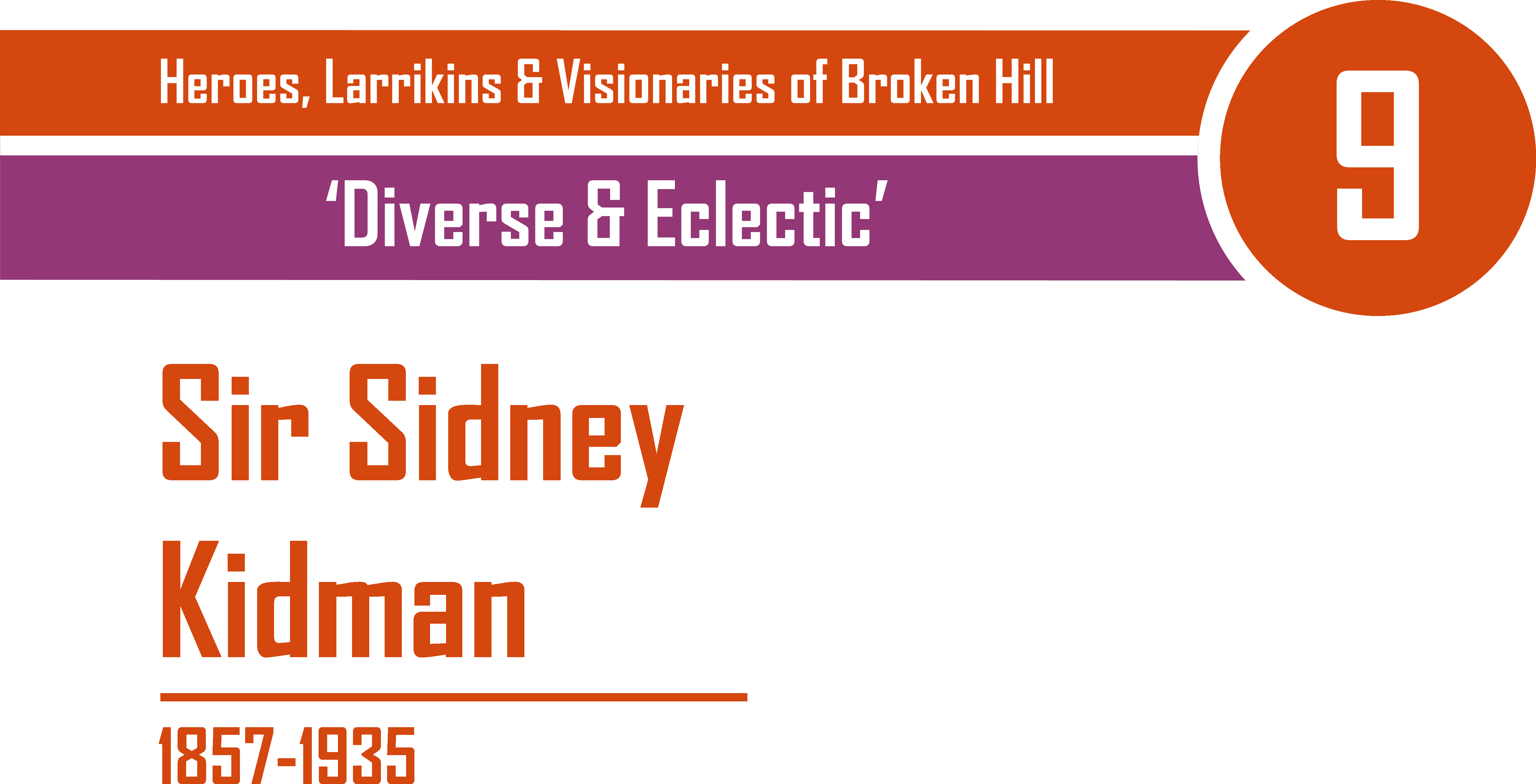Sir Sidney Kidman

Sidney Kidman was twelve when he went to work in the busy Adelaide stockyards, sustained by stories of the outback told by overlanders: the drovers and squatters who crossed the continent from Queensland to South Australia with their thousand-head of cattle to sell in Adelaide.
For young Sidney, whose stepfather got nasty when he’d had a few drinks, the dream of the wild west of NSW was vivid. So, he saved his wages of three shillings a week until he had enough to buy a horse (Cyclops only had one eye, so Sidney got him cheap) and to hightail it, as fast as a one-eyed horse could carry him, to a cattle station his brother George was managing in the Barrier Range near Silverton and Broken Hill where, in 1870, a few gold prospectors were hoping to make their fortunes.
George didn’t want his little brother hanging around, so Sidney worked for a time in German Charlie’s grog shanty before making friends with an Aboriginal man named Billy, from whom he learned a few things about surviving in the bush: how to read the land and the sky; where to find food and water and which snakes and spiders to keep a respectful distance from. The friendship between Kidman and Billy resulted in Kidman respecting the Aboriginal people for the rest of his life.
Sidney Kidman worked on the vast Mt Gipps cattle station where Charles Rasp discovered silver ore in 1883, which led to the settlement of Broken Hill and the creation of Broken Hill Proprietary (BHP). In 1884 Kidman bought a one-fourteenth share of BHP from James Poole, a member of the Syndicate of Seven, for the cost of ten steers. Kidman later sold his BHP share for a small sum.
Kidman successfully bought drought-affected cattle, fattened them for market and sold them for a profit. He acquired his first cattle station Owen Springs in the Northern Territory from where he roamed the country looking for more land, more stations, and more cattle, until he owned a chain of properties from the Northern Territory to South Australia, totalling almost 260,000 square kilometres. He became known as the Cattle King.
Kidman varied his interests. He supplied beef to Broken Hill, had a sideline in providing horses to the British army in India, and another in a coaching business. By WWI he was a millionaire and financed the war effort by purchasing fighter planes and donating beef to the armed forces. He gave large sums of money to the Salvation Army and donated a property to the South Australian government to use as a high school. He was knighted in 1921. Sir Sidney Kidman died in 1935.
Audio transcript available.